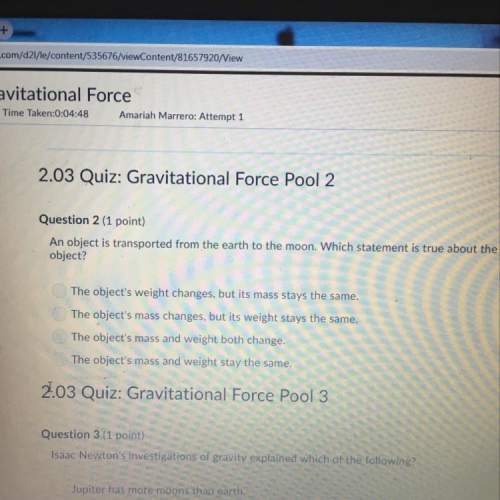
Chemistry, 17.03.2020 05:43 Buxtoman8431
The mechanism for the reaction described by the equation 2 N 2 O 5 ( g ) ⟶ 4 NO 2 ( g ) + O 2 ( g ) 2N2O5(g)⟶4NO2(g)+O2(g) is suggested to be ( 1 ) N 2 O 5 ( g ) k 1 ⇌ k − 1 NO 2 ( g ) + NO 3 ( g ) ( 2 ) NO 2 ( g ) + NO 3 ( g ) k 2 −→ NO 2 ( g ) + O 2 ( g ) + NO ( g ) ( 3 ) NO ( g ) + N 2 O 5 ( g ) k 3 −→ 3 NO 2 ( g ) (1)N2O5(g)⇌k−1k1NO2(g)+NO3(g)(2)NO2 (g)+NO3(g)→k2NO2(g)+O2(g)+NO(g)(3)N O(g)+N2O5(g)→k33NO2(g) Assuming that [ NO 3 ] [NO3] is governed by steady-state conditions, derive the rate law for the production of O 2 ( g ) .

Answers: 2
Another question on Chemistry

Chemistry, 23.06.2019 04:31
One student said that the investigation was not valid (a fair test). write a plan for the investigation that includes improvements to the method and apparatus
Answers: 1

Chemistry, 23.06.2019 07:00
Why do the strengths of london (dispersion) forces generally increase with increasing molecular size? choose one: a. heavier atoms have stronger attractions for each other than lighter atoms. b. dispersion forces are all equal in magnitude; there is no size dependence. c. dispersion forces arise from the attraction between the nuclei of atoms, and larger molecules have larger nuclei. d. dispersion forces arise from dipoles caused by the electron distribution being distorted. larger molecules have more electrons and, therefore, more distortions and a bigger force. e. dispersion forces depend on distance. larger molecules are farther apart and so the forces are smaller.
Answers: 2

Chemistry, 23.06.2019 11:30
What makes up a film badge? layers of photographic film covered in black paper. an electrolyte paste spread across a plastic sheet. a thin film of salts and other chemicals on clear acetate. a panel of photographic film exposed to the air. ✓
Answers: 2

Chemistry, 23.06.2019 12:30
15) a substance used in manufacturing gasoline consists of finely divided platinum supported on an inert solid. suppose that the platinum is formed by the high temperature reaction between platinum (iv) oxide and hydrogen gas. the other product is water. a) write and balance the equation b) how many grams of hydrogen are needed to produce 1.0 g of platinum metal? c) how many moles of water are produced at the same time? how many grams? ( show work, .)
Answers: 1
You know the right answer?
The mechanism for the reaction described by the equation 2 N 2 O 5 ( g ) ⟶ 4 NO 2 ( g ) + O 2 ( g )...
Questions




Mathematics, 22.06.2019 18:00




Social Studies, 22.06.2019 18:00


Mathematics, 22.06.2019 18:00

Social Studies, 22.06.2019 18:00

History, 22.06.2019 18:00

Business, 22.06.2019 18:00


Health, 22.06.2019 18:00


Mathematics, 22.06.2019 18:00



Mathematics, 22.06.2019 18:00




